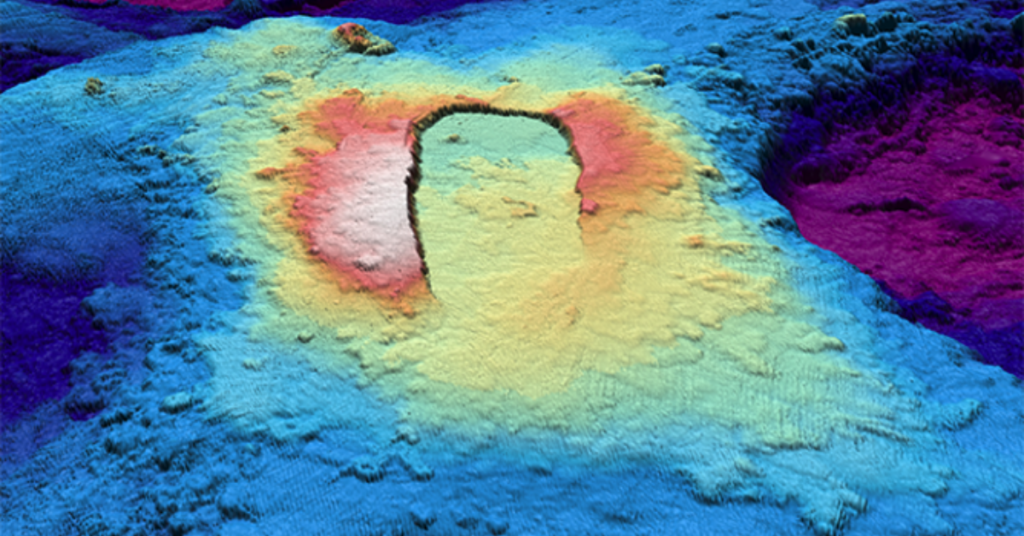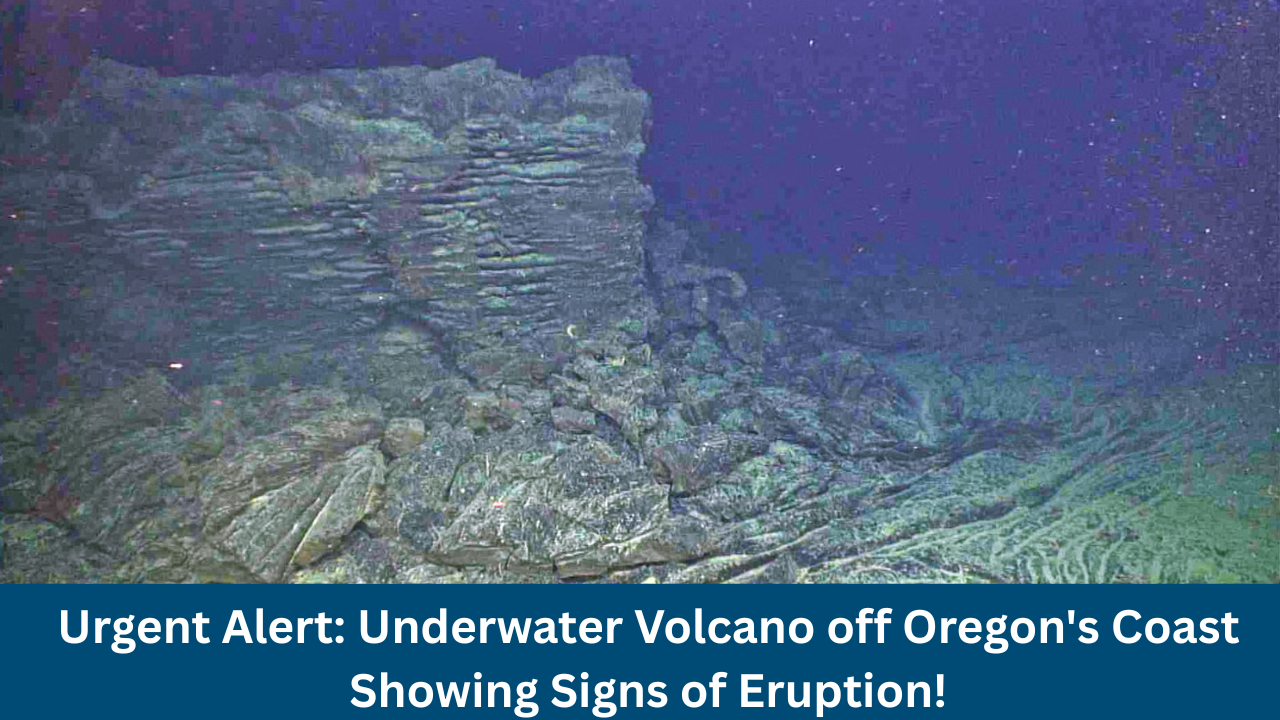An underwater volcano, located about 300 miles off the coast of Oregon, is inching closer to an eruption. This is the first time in nearly a decade that the Axial Seamount volcano has shown signs of such activity. Scientists from the University of Washington (UW) have been monitoring the volcano’s movements and report that it may erupt sometime in the near future. While the eruption is not expected to pose a direct threat to the public, it provides a unique opportunity for scientists to study volcanic activity beneath the ocean and learn more about the Earth’s geological processes.
What Is Axial Seamount?
Axial Seamount is an underwater volcano located along the Juan de Fuca Ridge, a tectonic plate boundary between the Pacific Ocean and the North American continent. It sits deep beneath the ocean’s surface, making it difficult for the general public to witness volcanic activity directly.
The volcano is part of a larger geological feature called a hotspot, where magma from the Earth’s mantle pushes through the crust, creating volcanic islands or seamounts. In this case, the seamount is located around 1,200 meters (about 3,900 feet) beneath the ocean’s surface.
Despite its remote location, the Axial Seamount volcano plays a significant role in understanding volcanic processes. The region surrounding the volcano experiences frequent volcanic activity, with many of the Earth’s volcanoes located under the ocean’s surface.
In fact, approximately three-quarters of the world’s volcanic activity takes place at mid-ocean spreading centres like the one on which the Axial Seamount is located. While the volcano’s activity does not pose a threat to people living on land, it provides an invaluable opportunity for scientists to study volcanic behaviour and the behaviour of magma beneath the ocean floor.
The Signs of an Imminent Eruption
In December 2024, scientists from the UW School of Oceanography announced that Axial Seamount had been showing signs of an impending eruption. This would mark the volcano’s first eruption since 2015. The eruption is expected to be relatively small compared to land-based volcanic eruptions, but it will still produce significant seismic and acoustic activity that scientists can track.
Scientists have been monitoring the volcano closely using a variety of techniques. One of the primary methods is to measure the volcano’s inflation, which occurs when magma builds up beneath the surface. As magma accumulates, the pressure within the volcano increases, causing the surrounding rock and the surface above it to expand. This process, known as inflation, is one of the key indicators that an eruption could be approaching.
“We’ve seen that over time, the volcano inflates due to the buildup of magma beneath the surface,” said William Wilcock, a professor at the UW School of Oceanography. “The more the volcano inflates, the more likely it is that an eruption is imminent.”
While scientists are closely monitoring inflation, they are also keeping track of the increased number of small earthquakes that have been occurring beneath the volcano. These seismic events are another signal that magma is moving toward the surface. Although the timing of an eruption is difficult to predict, the data suggest that Axial Seamount may erupt sometime before the end of the year.
Why Axial Seamount’s Eruption Matters
Although Axial Seamount is located far from human populations, its eruption offers significant insights into volcanic processes. The area around Axial Seamount is part of a larger tectonic system where the Earth’s plates are slowly moving apart. As the plates shift, magma from beneath the Earth’s surface rises, creating new oceanic crust. This is a vital process in the Earth’s geology, and by studying it, scientists can gain a deeper understanding of how the Earth’s crust is formed and how volcanoes behave beneath the ocean.

“Axial Seamount is an important site for studying mid-ocean ridges and volcanic activity,” said Deborah Kelley, a professor at the UW School of Oceanography and the director of the Regional Cabled Array. “Most of the world’s volcanic activity happens along these mid-ocean ridges, but we’ve never had the opportunity to directly witness an eruption along this chain of mountains.”
While it’s not expected to cause any direct harm to people, the eruption will provide scientists with valuable data that could help improve our understanding of volcanic eruptions. By observing how the volcano behaves, researchers can learn more about the dynamics of volcanic activity and how it can impact the surrounding environment. For example, researchers can examine the effects of underwater volcanic eruptions on ocean ecosystems, as these events can alter the chemical composition of seawater, which in turn can affect marine life.
What Happens During an Underwater Eruption?
When Axial Seamount erupts, it won’t produce the type of explosive eruption seen in land-based volcanoes. Instead, the eruption will be relatively small and will primarily involve the release of gas and magma beneath the ocean. However, the eruption will still create some interesting phenomena that scientists can observe.
As the volcano erupts, magma from below the surface will come into contact with the cold ocean water, causing a series of physical reactions. One of the most fascinating processes that occurs during an underwater eruption is the creation of steam bubbles. When magma comes into contact with seawater, pockets of seawater can get trapped beneath the lava flows. As the water heats up, it turns into steam. This steam then escapes from beneath the lava, forming a bubble that rapidly cools and collapses. The result is a loud implosion that can be detected by underwater microphones known as hydrophones.
“When the steam escapes and forms bubbles, it creates a loud implosion that we can pick up with our hydrophones,” said Wilcock. “These sounds are a unique signature of underwater volcanic eruptions, and they give us important information about what’s happening beneath the surface.”
These implosions and other seismic activities can provide valuable data for scientists studying the eruption. By tracking the sounds and the physical changes in the seafloor, researchers can learn more about the dynamics of the eruption and the behaviour of magma as it interacts with the ocean water.
How Scientists Are Monitoring the Eruption
To monitor Axial Seamount, scientists use a network of seafloor sensors and underwater cameras. The sensors are placed along the seafloor to measure changes in pressure, temperature, and seismic activity. This allows researchers to track the volcano’s inflation, the occurrence of small earthquakes, and other signs of volcanic activity.
In addition to these sensors, scientists use an underwater cable system that continuously monitors the volcano. This system, known as the Regional Cabled Array, sends real-time data to researchers, allowing them to monitor the volcano’s activity and make predictions about when an eruption might occur. This technology has greatly enhanced scientists’ ability to study underwater volcanoes, providing them with insights that would have been impossible to gather just a few decades ago.
For now, scientists will continue to monitor the volcano closely, watching for any signs that it is about to erupt. While it’s not clear exactly when the eruption will happen, the volcano’s increasing inflation and seismic activity suggest that it could be imminent.
The Importance of Studying Underwater Volcanoes
Axial Seamount is just one of many underwater volcanoes that scientists are studying to understand the Earth’s geological processes better. Volcanic activity beneath the ocean is a critical part of the Earth’s natural systems, and studying these eruptions helps scientists learn more about the planet’s formation and the dynamic processes that shape it. Additionally, understanding underwater volcanic activity is important for predicting the potential effects on marine ecosystems and oceanic chemistry.
For now, scientists will continue to monitor Axial Seamount, waiting for the moment when it finally erupts. While it may not pose any direct threat to people on land, its eruption will offer a rare glimpse into the fascinating world of underwater volcanic activity.

Deepak Grover is a dedicated content writer at OTE News, specializing in government affairs, public policy, and current events. With a keen eye for detail and a passion for factual reporting, he ensures readers receive accurate and insightful news. Deepak holds a degree in Political Science and has experience in research-driven journalism.
When not writing, he enjoys reading historical books, exploring hiking trails, and staying updated with global political trends. His commitment to ethical journalism makes him a trusted voice at OTE News.




